15 Warning Signs Your Humidifier Is Making Your Air Toxic (Check #7 Immediately!)
Like the proverbial canary in a coal mine, your humidifier can signal dangerous air quality issues before they become serious health hazards.
You’ve probably noticed some changes in your home environment lately—perhaps a lingering cough or mysterious spots on your furniture – but haven’t connected these symptoms to your trusty humidity helper.
While humidifiers can be excellent tools for maintaining ideal indoor air quality, they can also transform into silent saboteurs when not properly maintained.
Before you dismiss those subtle signs as mere housekeeping concerns, you’ll want to know these essential red flags that could indicate your humidifier is actually contaminating your air.
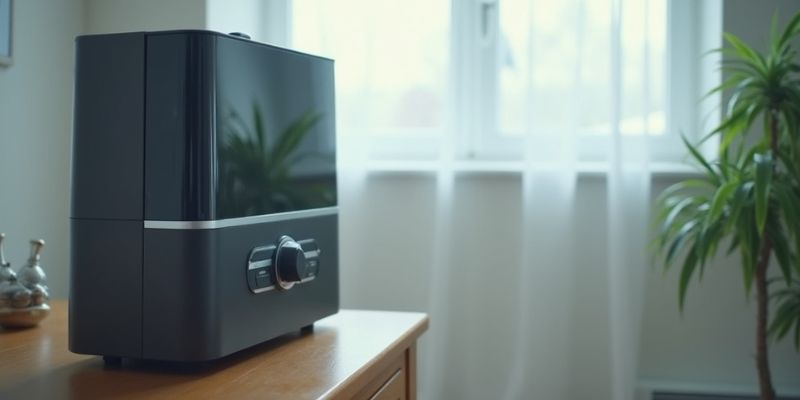
White Dust on Furniture
A fine layer of white powder accumulating on your furniture can indicate that your humidifier is dispersing mineral-rich water into the air.
This white dust consists primarily of calcium and magnesium particles that become airborne when tap water evaporates in your device.
While these minerals aren’t typically harmful, they can trigger respiratory issues in sensitive individuals.
You’ll need to take immediate action if you notice this buildup.
Switch to distilled or demineralized water to prevent mineral deposits, or install a demineralization cartridge in your unit.
Don’t ignore this warning sign – these particles can settle deep in your lungs and potentially damage your humidifier’s internal components.
Regular cleaning with vinegar will dissolve existing mineral deposits, but addressing the water source remains essential for maintaining ideal air quality.
Musty or Moldy Smells
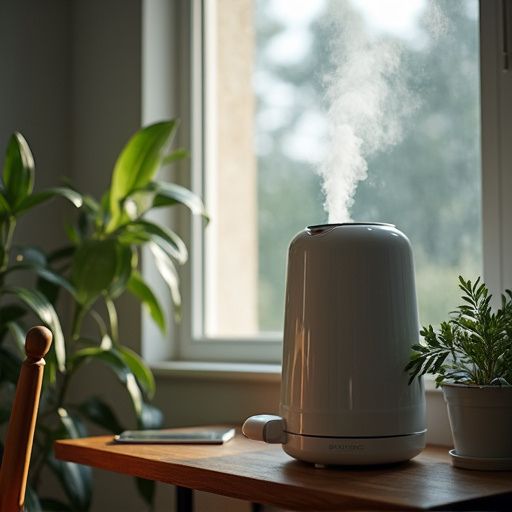
One of the most concerning indicators of a toxic humidifier is the presence of musty or moldy odors emanating from your unit.
These unpleasant smells signal that harmful microorganisms are actively growing inside your device, potentially releasing spores and mycotoxins into your breathing space.
Don’t ignore these warning signs, as they indicate that your humidifier has become a breeding ground for dangerous pathogens.
The moisture-rich environment within the reservoir creates ideal conditions for mold proliferation, especially if you’re not cleaning the unit regularly.
When you detect these odors, you’ll need to immediately unplug your humidifier and perform a thorough disinfection.
If the smell persists after cleaning, it’s time to replace your unit – your respiratory health isn’t worth the risk of continued exposure to these airborne contaminants.
Increased Allergy Symptoms
Intensification of allergy symptoms often serves as a critical indicator that your humidifier has become contaminated.
If you’re experiencing increased sneezing, coughing, watery eyes, or nasal congestion after running your device, it’s likely dispersing allergens throughout your space.
These reactions typically stem from mold spores, bacteria, or mineral deposits being aerosolized and released into your breathing environment.
You’ll want to monitor whether your symptoms worsen specifically when the humidifier is operating.
Pay attention to timing – if your allergies flare up within hours of device usage, that’s a red flag.
Don’t ignore these warning signs, as continued exposure to contaminated mist can lead to more severe respiratory issues, including potential hypersensitivity pneumonitis or other inflammatory responses.
Your body’s reaction is fundamentally warning you that it’s time to thoroughly clean or replace your unit.
Window Condensation
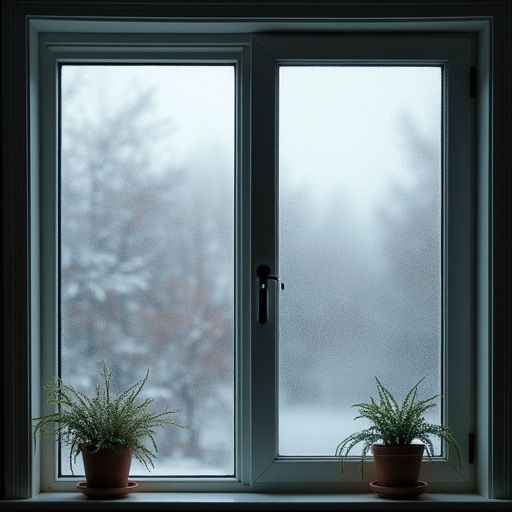
Beyond respiratory symptoms, excessive window condensation presents a clear physical sign of a malfunctioning or contaminated humidifier.
When you notice water droplets consistently forming on your windows’ interior surfaces, it’s a red flag that your humidifier’s output level is too high or it’s dispersing contaminated moisture into your air.
You’ll want to monitor your windows during winter months particularly, as cold exterior temperatures make condensation more visible.
If you’re seeing streams of water running down window panes or persistent fogging, you’re dealing with relative humidity levels above 50% – an ideal environment for toxic mold growth.
Don’t ignore these warning signs, as they indicate you’re not only risking window and wall damage but also creating perfect conditions for harmful microorganisms to thrive in your living space.
Peeling Wallpaper
Along with window condensation issues, peeling wallpaper serves as a crucial indicator that your humidifier’s output has created dangerously high moisture levels in your home.
When excess moisture penetrates your walls, it weakens the adhesive bond between wallpaper and drywall, causing separation and unsightly peeling.
You’ll notice this deterioration typically starts at the seams or corners, where moisture tends to accumulate first.
Don’t ignore these warning signs – they’re clear indicators that you’re at risk for toxic mold growth behind your walls.
The same excessive humidity that’s destroying your wallpaper creates perfect conditions for harmful microorganisms to thrive.
Check your humidifier’s settings immediately and consider using a hygrometer to maintain indoor humidity between 30-50%.
If you’ve already spotted peeling, you’ll need to address both the humidity source and potential hidden mold growth.
Black Spots Near Humidifier

The appearance of black spots around your humidifier represents one of the most immediate red flags of toxic contamination.
These dark patches typically indicate the presence of Aspergillus niger or other harmful mold species that thrive in the excess moisture your device creates.
If you don’t address this issue promptly, these spores can infiltrate your respiratory system.
Don’t mistake these spots for ordinary dirt or dust.
When you notice black specks forming on walls, furniture, or surfaces within a six-foot radius of your humidifier, you’re witnessing active mold colonization.
The spores become airborne each time your unit operates, spreading microscopic toxins throughout your space.
Test these spots immediately using a mold detection kit, and discontinue humidifier use until you’ve thoroughly cleaned the area and addressed the underlying moisture control issues.
Difficulty Breathing at Night
Waking up with breathing difficulties could signal that your humidifier has become a breeding ground for harmful microorganisms.
When you’re experiencing nighttime respiratory distress, your humidifier might be dispersing bacteria, mold spores, or mineral particles throughout your bedroom air.
Pay attention to symptoms like chest tightness, wheezing, or unexplained coughing that worsen during sleep hours.
These issues often intensify if you’ve neglected proper maintenance of your unit’s water tank and filtration system.
The microorganisms can trigger allergic reactions, asthma attacks, or hypersensitivity pneumonitis – a condition caused by inhaling inflammatory particles.
Don’t let your humidifier compromise your respiratory health.
If you’re experiencing these symptoms, immediately unplug your device, perform a deep cleaning, and replace any worn filters.
Consider using distilled water to prevent mineral buildup.
Wet Carpets or Flooring

Moisture accumulation on your floors and carpets near a humidifier indicates potentially dangerous overhumidification of your living space.
This excess moisture creates an ideal breeding ground for toxic black mold, bacteria, and dust mites that can trigger severe respiratory issues and allergic reactions.
You’ll need to check your floors regularly for signs of dampness, paying special attention to carpet fibers, hardwood, and laminate surfaces within a 6-foot radius of your humidifier.
If you notice water beading, dark spots, or a musty odor, you’re running your unit at too high a setting.
Don’t ignore these warning signs – they’re clear indicators that you’re compromising your indoor air quality and potentially damaging your home’s structural integrity.
Adjust your humidifier’s output immediately or consider using a hygrostat to maintain suitable humidity levels.
Mold Around Air Vents
Visible mold growth around your air vents serves as a critical indicator that your humidifier’s output has exceeded safe levels.
When you spot dark patches or discoloration surrounding ventilation openings, you’re likely dealing with excess moisture accumulation that’s creating an ideal breeding ground for harmful spores.
Don’t ignore these warning signs, as they indicate your humidifier is pushing your indoor relative humidity beyond the recommended 30-50% range.
The presence of mold near vents suggests that moisture-laden air is condensing as it meets cooler surfaces, creating perfect conditions for microbial growth.
This situation can compromise your respiratory health and damage your HVAC system’s components.
You’ll need to adjust your humidifier’s settings immediately and consider using a hygrometer to monitor humidity levels more accurately.
Persistent Coughing
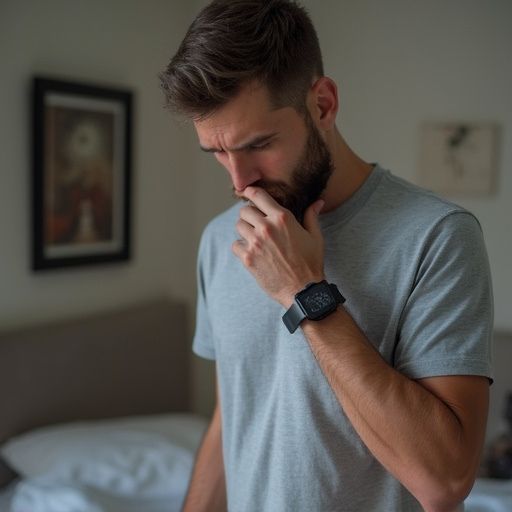
A persistent cough that develops or worsens when your humidifier runs could signal dangerous microbial contamination in your device.
If you’re experiencing recurring bouts of coughing, particularly during or after humidifier operation, you’ll need to investigate immediately.
This type of cough often indicates that your humidifier is dispersing harmful microorganisms, mineral deposits, or bacterial endotoxins into your breathing space.
You might notice the cough intensifies at night or when you’re in closer proximity to the unit.
Don’t ignore these symptoms, as they can lead to more severe respiratory issues.
To address this, you’ll need to thoroughly clean your humidifier with a vinegar solution or manufacturer-approved disinfectant.
If the cough persists even after cleaning, replace your unit immediately.
Consider switching to a UV-light equipped model that actively kills harmful microorganisms.
Discolored Water in Tank
If you notice murky, tinted, or cloudy water in your humidifier’s tank, you’re likely dealing with microbial growth or mineral accumulation.
This discoloration often indicates the presence of bacteria, mold, or hard water deposits that can become airborne when dispersed through your device’s misting function.
Don’t mistake colored water for harmless mineral buildup.
These contaminants can trigger respiratory issues, allergic reactions, and even hypersensitivity pneumonitis when inhaled.
Pink or orange tints typically signal the presence of Serratia marcescens bacteria, while green or brown discoloration suggests algae growth.
White or grayish residue usually points to mineral deposits from hard water.
Take immediate action by emptying the tank, thoroughly disinfecting all components with vinegar or hydrogen peroxide, and refilling with distilled water to prevent future contamination.
Humidity Above 60 Percent

Maintaining indoor humidity levels above 60 percent creates an ideal breeding ground for harmful microorganisms and can greatly compromise your home’s air quality.
This excess moisture promotes the rapid growth of mold, mildew, dust mites, and bacteria, which can trigger respiratory issues and allergic reactions.
You’ll notice several indicators when your humidifier’s pushing humidity too high: condensation on windows, damp spots on walls or ceilings, and a musty odor throughout your space.
To protect your health, invest in a reliable hygrometer to monitor humidity levels, and adjust your humidifier’s output accordingly.
Keep indoor humidity between 30-50 percent for peak air quality and comfort.
If you can’t lower the humidity despite reducing your humidifier’s settings, it’s time to check for malfunctioning controls or consider replacing the unit.
Visible Water Droplets
Visible water droplets around your humidifier serve as a clear warning sign of oversaturation, often accompanying the high humidity levels previously discussed.
When you notice condensation forming on windows, walls, or surfaces near your humidifier, you’re witnessing excess moisture that can’t be absorbed by the air.
This condensation creates the perfect environment for harmful microorganisms to thrive.
You’ll find that these water droplets can lead to mold growth, bacteria proliferation, and structural damage to your home.
They’ll also compromise your indoor air quality by releasing potentially toxic spores into your breathing space.
Don’t wait to take action – if you spot water droplets, immediately reduce your humidifier’s output or shut it off.
You can prevent this issue by monitoring humidity levels and maintaining proper ventilation in your space.
Strange Noises During Operation
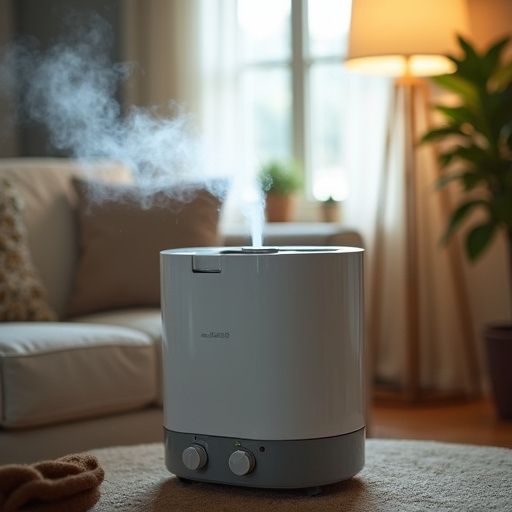
While normal humidifiers emit a gentle humming sound, unusual noises like clicking, crackling, or grinding should immediately raise concerns about your unit’s condition.
These sounds often indicate mineral buildup on the oscillator or fan mechanism, which can release harmful particles into your air.
If you’re hearing rattling or buzzing, it’s likely that debris has accumulated in your humidifier’s tank or base.
This buildup creates perfect conditions for bacteria and mold growth, which can then become aerosolized.
Don’t ignore popping or sputtering sounds, as they typically signal that your unit’s working harder than it should, potentially overheating and releasing plastic particles or other toxins into your environment.
When you notice any irregular sounds, unplug your unit immediately and inspect it for mineral deposits or mechanical issues.
Mineral Buildup on Surfaces
A telltale sign of toxic humidifier conditions emerges when white, chalky deposits begin accumulating on nearby surfaces and furniture.
These deposits, primarily composed of calcium and magnesium carbonates, indicate that you’re dispersing mineral-laden water droplets throughout your indoor air.
If you’re noticing a fine dust on your dark furniture, windowsills, or electronics, you’ll need to take immediate action.
These mineral deposits aren’t just unsightly – they’re potentially harmful to your respiratory system when inhaled.
The presence of mineral buildup signals that you’re either using hard water, failing to clean your unit regularly, or both.
You’ll want to switch to distilled water and descale your humidifier using a vinegar solution to prevent these toxic particles from circulating through your breathing space.
FAQs
Can Using Distilled Water Prevent All Humidifier-Related Health Issues?
While distilled water reduces mineral buildup and bacterial growth, it won’t prevent all health risks. You’ll still need to clean your humidifier regularly and monitor humidity levels to avoid mold growth and respiratory issues.
How Often Should I Replace My Humidifier’s UV Light Bulb?
You’ll need to replace your humidifier’s UV light bulb every 12 to 18 months, even if it’s still working. Don’t wait for failure—regular replacement guarantees peak germicidal performance and protects your air quality.
Do Ultrasonic Humidifiers Pose Different Health Risks Than Evaporative Ones?
You’d think ultrasonic humidifiers would be safer, but they actually disperse mineral particles and microorganisms directly into your air. Unlike evaporative models that naturally filter these contaminants, ultrasonics need regular maintenance to stay healthy.
What’s the Safest Humidity Level for Homes With Young Children?
You’ll want to maintain indoor humidity between 30-50% for children’s health, with 45% being ideal. Don’t exceed 50%, as higher levels can promote mold growth and trigger respiratory issues.
Are Whole-House Humidifiers More Likely to Cause Air Quality Problems?
Whole-house humidifiers won’t inherently cause more air quality issues, but you’ll need proper maintenance to prevent problems. Your system’s integrated design actually offers better control and filtration than portable units do.
Final Thoughts
An ounce of prevention is worth a pound of cure when it comes to your humidifier’s maintenance.
You’ll need to monitor these warning signs vigilantly, as toxic air can develop rapidly in poorly maintained units.
Check your humidity levels daily, clean your unit weekly, and replace filters according to manufacturer specifications.
If you’ve noticed any of these critical indicators, particularly persistent coughing, discontinue use immediately and service your unit.